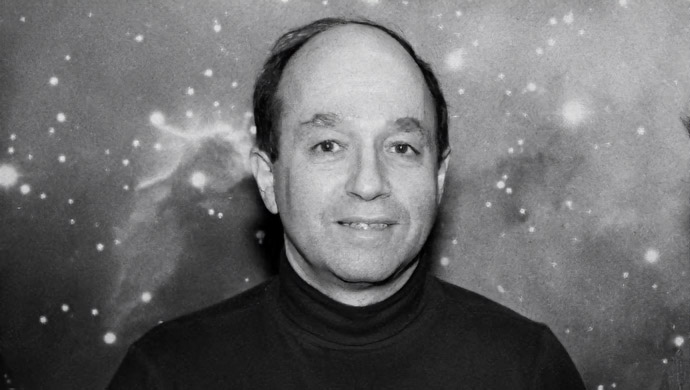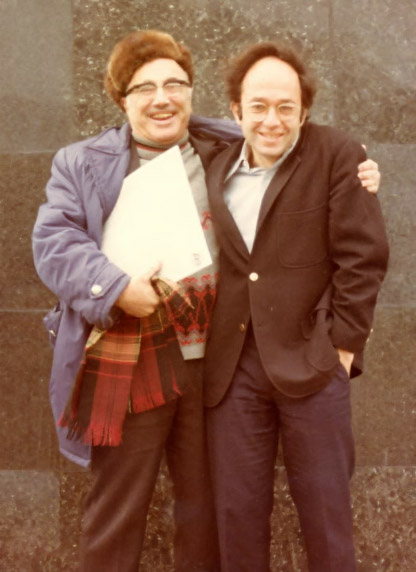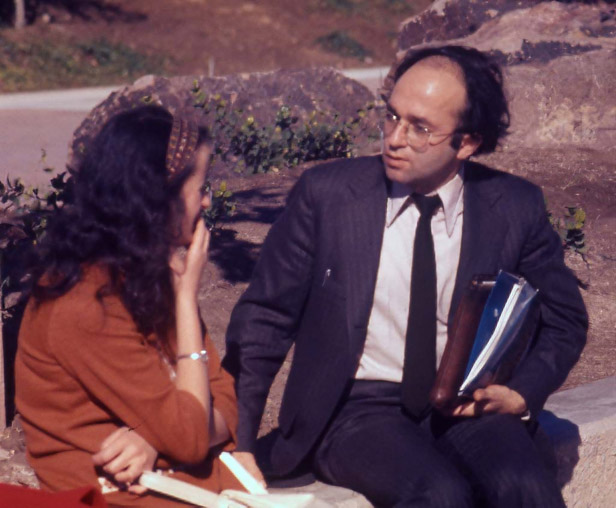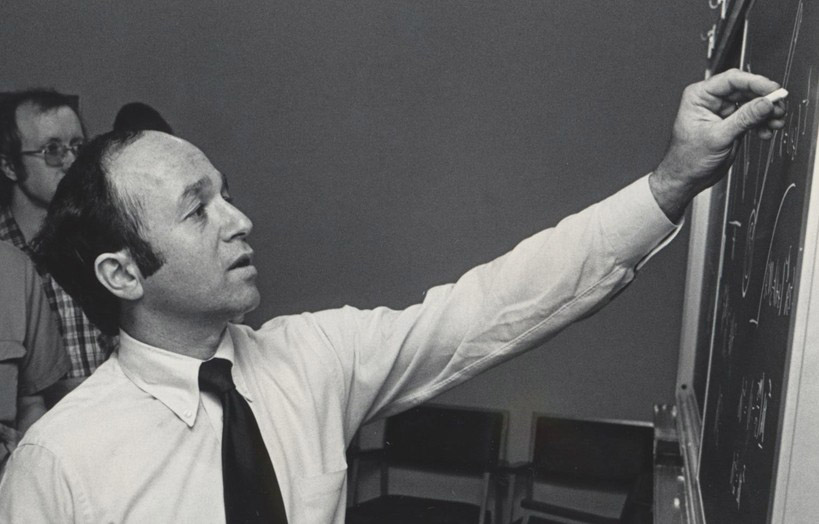JEREMIAH P. OSTRIKER (1937-2025)
Rare are astrophysicists that throughout their career keep proposing transformative ideas on the constituents of the Universe and the physical mechanisms driving its evolution. Jeremiah P. (“Jerry”) Ostriker, was perhaps the best example of this rare type of scientist. He died on April 6, 2025 of renal failure at age 87, after a protracted illness.

Figure 1: Jeremiah Ostriker in 1991.
Credits: JOHN SOTOMAYOR/The New York Times/Redux.
In particular, Ostriker was instrumental (with P. James Peebles) in both popularizing the idea that galaxies are embedded in massive halos that stabilize their disks (using early N-body simulations)[1] and explaining their kinematics[2] (independently of Jaan Einasto and colleagues in Estonia), before the observation of flat outer rotation curves of spiral galaxies by Vera Rubin and others. It soon became widely accepted that these halos are made of dark matter that dominate the mass density of the Universe. Ostriker later used large simulations to argue, against popular thought, that warm dark matter, solves many issues with the observations, in particular for dwarf galaxies[3]. He later popularized ultra-light (“fuzzy”) dark matter, again showing how it better explains many observations[4]. Perhaps equally fundamental was Ostriker’s early realization (with Paul Steinhardt) that observations favor a Universe whose energy density is dominated by the vacuum energy, now called dark energy[5] (independently of a similar proposal by Michael Turner and Lawrence Krauss). Just a few years later dark energy was discovered, using supernova explosions as standard candles, by two competing teams whose leaders were later awarded the Nobel prize.

Figure 2: Jerry Ostriker (right) with Yakov Zel’dovich (1976). (1976).
Credit: Photograph Courtesy of the Ostriker family.
Ostriker’s most cited paper concerned a 3-phase model of the interstellar medium (with Christopher McKee) involving many physical mechanisms[6], in particular heating by supernovae, conduction, that agreed with many different observations. Among his many other accomplishments, Ostriker first proposed (with James Gunn) that pulsars were neutron stars whose magnetic fields were misaligned with their spin[7]. He proposed (with Roger Blandford) that cosmic rays were accelerated by shocks[8].
But Ostriker’s main focus was on galaxies. With Martin Rees, he argued that early physical processes impose a maximum mass to galaxies[9], as shown independently by James Binney and by Joseph Silk. He first understood that massive elliptical galaxies grew by accretion of satellites via dynamical friction, which he called galactic cannibalism[10]. He was obsessed by the thinness of the disks of many spiral galaxies, perhaps because of a giant poster of one of them in his breakfast room. He proposed that thin disks would not only require a dark matter halo to stabilize them, but would thicken if bombarded by too many structures: on one hand by black holes as constituents of the dark matter halo, unless massive[11] and on the other hand by too many small galaxies, thus favoring a low-density Universe, disavowing the then popular cosmological model of a Universe of critical mass density[12]. Following a dream he recounted in his summary of a conference on the Milky Way[13], he developed a strong team in cosmological hydrodynamical simulations to understand the mysteries of galaxies, and with it, explained (with Renyue Cen) that a large fraction of warm/hot gas is undetected because it emits in the poorly-observed extreme-UV part of the electromagnetic spectrum[14].
 Figure 3: Jerry Ostriker with Beatrice Tinsley (Tucson, 1974). |
 Figure 4: Ostriker (with Scott Tremaine in the background) demonstrating a new idea in the Astrophysical Sciences building, at Princeton University (1978). |
Jerry Ostriker was a formidable astrophysicist, full of new ideas, with a quick wit, an unusually broad understanding of astrophysical phenomena, a rare talent in hand-waving calculations to determine the evolution of a particular astronomical system, and an enthusiastic collaborator. Ostriker won many prestigious prizes, including the Helen B. Warner prize for young scientists, the Henry Norris Russell lecturership, the Karl Schwarzschild medal, the National Medal of Science, the gold medal of the Royal Astronomical Society, and the Gruber prize in Cosmology.

Figure 5: Jerry Ostriker in 2011.
(courtesy of the Ostriker family.)
Jerry Ostriker studied at Harvard, where he met his wife and renown poet Alicia. He did his doctoral studies under the supervision of future Nobel laureate Subrahmanyan Chandrasekhar. After postdoctoral work at Cambridge he became a professor at Princeton University, where he remained for 47 years. Ostriker chaired the Department of Astrophysical Sciences for 16 years, where he mentored a large number of now famous astrophysicists, led its scientific animation, and would often tour the offices of all the doctoral students to discuss their work and issues. He played a key administrative role at Princeton as university provost for six years, where he reformed the system of financial aid to students to make Princeton a more egalitarian environment. He then spent three years as Plumian Professor at the University of Cambridge. We were fortunate to have Jerry visit the IAP on several occasions (see, below, the videos of his last two talks at IAP in 2011 and 2015).

Figure 6: Jerry Ostriker in 2021.
Credit: Xenia Helix (provided by Eve Ostriker).
In his memoirs published in Annual Reviews of Astronomy & Astrophysics[15], he emphasized how much science gains by opening to all groups of people, in particular women. The year he retired, becoming a part-time professor at Columbia University, near his childhood neighborhood, his former department hired his daughter Eve. So the Ostriker dynasty continues at Princeton.
Ostriker’s early papers on subjects spanning pulsars, dark matter, dark energy and galaxy formation have become classics, reference points for new generations of students. He continued his active research career until well into his ninth decade. His vigorous passion for the frontiers of astronomy and cosmology will long be remembered by his numerous colleagues, collaborators and students.
Written by Gary Mamon (whose PhD thesis was informally co-directed by Ostriker) and Joseph Silk (a collaborator of Ostriker).
References
![]() 1. Ostriker & Peebles (1973), A Numerical Study of the Stability of Flattened Galaxies: or, can Cold Galaxies Survive?, ApJ 186, 467.
1. Ostriker & Peebles (1973), A Numerical Study of the Stability of Flattened Galaxies: or, can Cold Galaxies Survive?, ApJ 186, 467.
![]() 2. Ostriker, Peebles, & Yahil (1974), The Size and Mass of Galaxies, and the Mass of the Universe, ApJ Letters 193, L1, 455.
2. Ostriker, Peebles, & Yahil (1974), The Size and Mass of Galaxies, and the Mass of the Universe, ApJ Letters 193, L1, 455.
![]() 3. Bode, Ostriker, & Turok (2001), Halo Formation in Warm Dark Matter Models, ApJ 556, 93
3. Bode, Ostriker, & Turok (2001), Halo Formation in Warm Dark Matter Models, ApJ 556, 93
![]() 4. Hui, Ostriker, Tremaine, & Witten (2017), Ultralight scalars as cosmological dark matter, Phys Rev D 95, 043541.
4. Hui, Ostriker, Tremaine, & Witten (2017), Ultralight scalars as cosmological dark matter, Phys Rev D 95, 043541.
![]() 5. Ostriker & Steinhardt (1995), The observational case for a low-density Universe with a non-zero cosmological constant, Nature 377, 600.
5. Ostriker & Steinhardt (1995), The observational case for a low-density Universe with a non-zero cosmological constant, Nature 377, 600.
![]() 6. McKee & Ostriker (1977), A theory of the interstellar medium: three components regulated by supernova explosions in an inhomogeneous substrate, ApJ 218, 148.
6. McKee & Ostriker (1977), A theory of the interstellar medium: three components regulated by supernova explosions in an inhomogeneous substrate, ApJ 218, 148.
![]() 7. Ostriker & Gunn (1969), On the Nature of Pulsars. I. Theory, ApJ 157, 1395.
7. Ostriker & Gunn (1969), On the Nature of Pulsars. I. Theory, ApJ 157, 1395.
![]() 8. Blandford & Ostriker (1978), Particle acceleration by astrophysical shocks, ApJ Letters 221, L29.
8. Blandford & Ostriker (1978), Particle acceleration by astrophysical shocks, ApJ Letters 221, L29.
![]() 9. Rees & Ostriker (1977), Cooling, dynamics and fragmentation of massive gas clouds: clues to the masses and radii of galaxies and clusters, MNRAS 179, 541.
9. Rees & Ostriker (1977), Cooling, dynamics and fragmentation of massive gas clouds: clues to the masses and radii of galaxies and clusters, MNRAS 179, 541.
![]() 10. Ostriker & Tremaine (1975), Another evolutionary correction to the luminosity of giant galaxies, ApJ Letters 202, L113.
10. Ostriker & Tremaine (1975), Another evolutionary correction to the luminosity of giant galaxies, ApJ Letters 202, L113.
![]() 11. Lacey & Ostriker (1985), Massive black holes in galactic halos?, ApJ 299, 633.
11. Lacey & Ostriker (1985), Massive black holes in galactic halos?, ApJ 299, 633.
![]() 12. Tóth & Ostriker (1992), Galactic Disks, Infall, and the Global Value of Omega, ApJ 389, 5.
12. Tóth & Ostriker (1992), Galactic Disks, Infall, and the Global Value of Omega, ApJ 389, 5.
![]() 13. Ostriker (1985), The Milky-Way - Summary and Outlook, IAU Symp. 106, 635.
13. Ostriker (1985), The Milky-Way - Summary and Outlook, IAU Symp. 106, 635.
![]() 14. Cen & Ostriker (1999), Where Are the Baryons?, ApJ 514, 1.
14. Cen & Ostriker (1999), Where Are the Baryons?, ApJ 514, 1.
![]() 15. Ostriker (2016), A Fortunate Half-Century, Ann. Rev. of Astron. & Astrophys. 54, 1.
15. Ostriker (2016), A Fortunate Half-Century, Ann. Rev. of Astron. & Astrophys. 54, 1.
Videos of talks by Jerry Ostriker at IAP
![]() On the formation of massive galaxies, May 13, 2011.
On the formation of massive galaxies, May 13, 2011.
![]() Dark matter: very light particles have the right properties to explain small-scale structure and delayed galaxy formation, December 7, 2015.
Dark matter: very light particles have the right properties to explain small-scale structure and delayed galaxy formation, December 7, 2015.
Writing
- Gary Mamon
Institut d’astrophysique de Paris, CNRS, Sorbonne Université
gam [at] iap [dot] fr - Joseph Silk
Institut d’astrophysique de Paris, CNRS, Sorbonne Université
silk [at] iap [dot] fr
Layout: Jean Mouette
April 2025
